In the 1961–1962 NBA basketball season,Wilt Chamberlain of the Philadelphia Warriors made 30 baskets. Some of the baskets were free throws (worth 1 point each) and some were field goals (worth 2 points each). The number of field goals was 10 more than the number of free throws.

If Wilt Chamberlain played 10 games during this season, what was the average number of points per game?
6
8
4
5
The correct Answer is:D
Average point 5010=5
Thus (d) is correct option.
Topper's Solved these Questions
Similar Questions
In the 1961–1962 NBA basketball season,Wilt Chamberlain of the Philadelphia Warriors made 30 baskets. Some of the baskets were free throws (worth 1 point each) and some were field goals (worth 2 points each). The number of field goals was 10 more than the number of free throws.
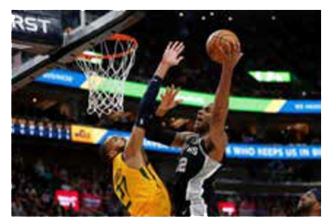
What was the total number of points scored?
View SolutionStudy the following information carefully and answer the given questions.
In a school 4 students A, B, C and D appeared in an English examination which is consist of 15 short and 4 long questions are asked. Each of short question carry 5 marks and each of long questions carry 10 mark and for a spelling error 0.5 mark is deducted. For not attempting a question, zero marks is awarded. In the English exam, A answered (x + 6) short questions, x long questions and did (2x + 10) spelling errors. Ratio of number of spelling errors made by A and B is 8 : 3. Total marks scored by D is 86. Ratio of short and long questions answered by B In the English exam is 5 : 1 and he scored total 102 marks. C scored 35 marks more in short questions than long questions except spelling errors and the number of spelling errors made by C is equal to the difference of the number of spelling errors made by A and B. Number of short questions answered by D is average of that answered by A and B. Percentage of number of long questions answered among all the question answered by D is 20%. Average of the number of spelling errors made by all four students A, B, C and D is 10. Each student attempts integral number of short as well as long questions.
A student E, scored 30 marks more than that by C, whose total marks is more than that by A but less than that by D. If the number of spelling errors made by E are 10 more than that by C, then the total marks scored by C is what percent less than that by E?
View Solution
Knowledge Check
In the 1961–1962 NBA basketball season,Wilt Chamberlain of the Philadelphia Warriors made 30 baskets. Some of the baskets were free throws (worth 1 point each) and some were field goals (worth 2 points each). The number of field goals was 10 more than the number of free throws.
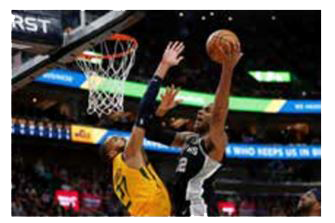
If Wilt Chamberlain played 5 games during this season, what was the average number of points per game?A5B8C10D4In the 1961–1962 NBA basketball season,Wilt Chamberlain of the Philadelphia Warriors made 30 baskets. Some of the baskets were free throws (worth 1 point each) and some were field goals (worth 2 points each). The number of field goals was 10 more than the number of free throws.
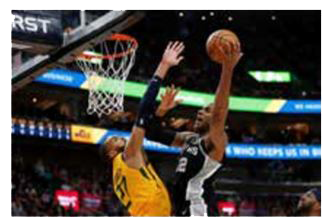
How many free throws did he make?A10 GoalsB20 GoalsC15 GoalsD18 GoalsIn the 1961–1962 NBA basketball season,Wilt Chamberlain of the Philadelphia Warriors made 30 baskets. Some of the baskets were free throws (worth 1 point each) and some were field goals (worth 2 points each). The number of field goals was 10 more than the number of free throws.
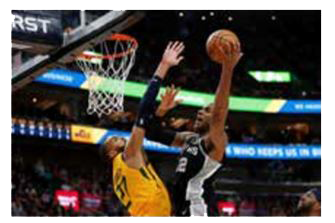
How many field goals did he make ?A10 GoalsB20 GoalsC15 GoalsD18 Goals
Study the given information carefully and answer the following questions.
There was a football tournament of three teams i.e. A, B and C in which each team played 2 matches. Score pattern of the tournament is:
• A team gets 2 points for scoring a goal against the opponent team.
• A team gets 3 points for scoring a goal against the opponent team from the outside area.
• There is a penalty of 1 point if a team concedes a goal.
• Only three players from each team scored the goals.
A – B Match: B is the winner of this game. Total points scored by B in this match is 4 . Also, team A scored 2 goals and none of the players scored the goal from the outside area.
A – C Match: C scored 0 points in the match. Only one player from team A scored a goal from outside area. A scored 4 points in this match.
B – C Match: B gets 6 points from match. Team C scored 1 goal more than Team B. One player from team B scored a goal from outside area but none from team C.
Find the ratio between the number of goals sored by team B in its match against team C to the number of goals scored by team A in its match against team C
View SolutionAfter having celebrated his brother’s birthday, Max makes his way to Fuchsia city, to take a boat to Cinnabar Island. The sailor, Mr. Hendricks, is however in a dilemma. There is a castle in the middle of the sea on the way to Cinnabar Is land. Owing to issues, he needs to bribe each and every soldier with 10 PokéDollars to pass through. He is not sure of the number of soldiers in the main towers due to the new rules that have been imposed. He seeks Max’s help. In the castle, there are passways as straight row and column (passways are the dark grey strips) at any point when you see left or right or up or down . Also there are some magical tunnels joining one stop (stops are the places where troops of soldiers stand) to the other in a non-straight manner. The magic of the tunnel is clon- ing the soldiers. If you place any number of soldiers in one stop, then all stops joined to it through the tunnel will have same number of cloned soldiers. Cloned soldiers can also be cloned if there is one more. Number of soldiers at any stop in any row or column are more than one and sum of all soldiers at all stops in any row or column is same. Every stop is marked a number from 1 to 6 and stops in any row or column have different numbers. Soldier troop with ‘x’ number of soldier will stand on the stop marked as ‘x’. There are some soldier having all time duty and they are depicted in the figure with their positions. But fearing for safety, the king increased the security and ordered to place a soldier on every stop in the above way of his convenience. The circle in the middle represents the main tower and Max has to find the number of extra soldiers. The answer is ________
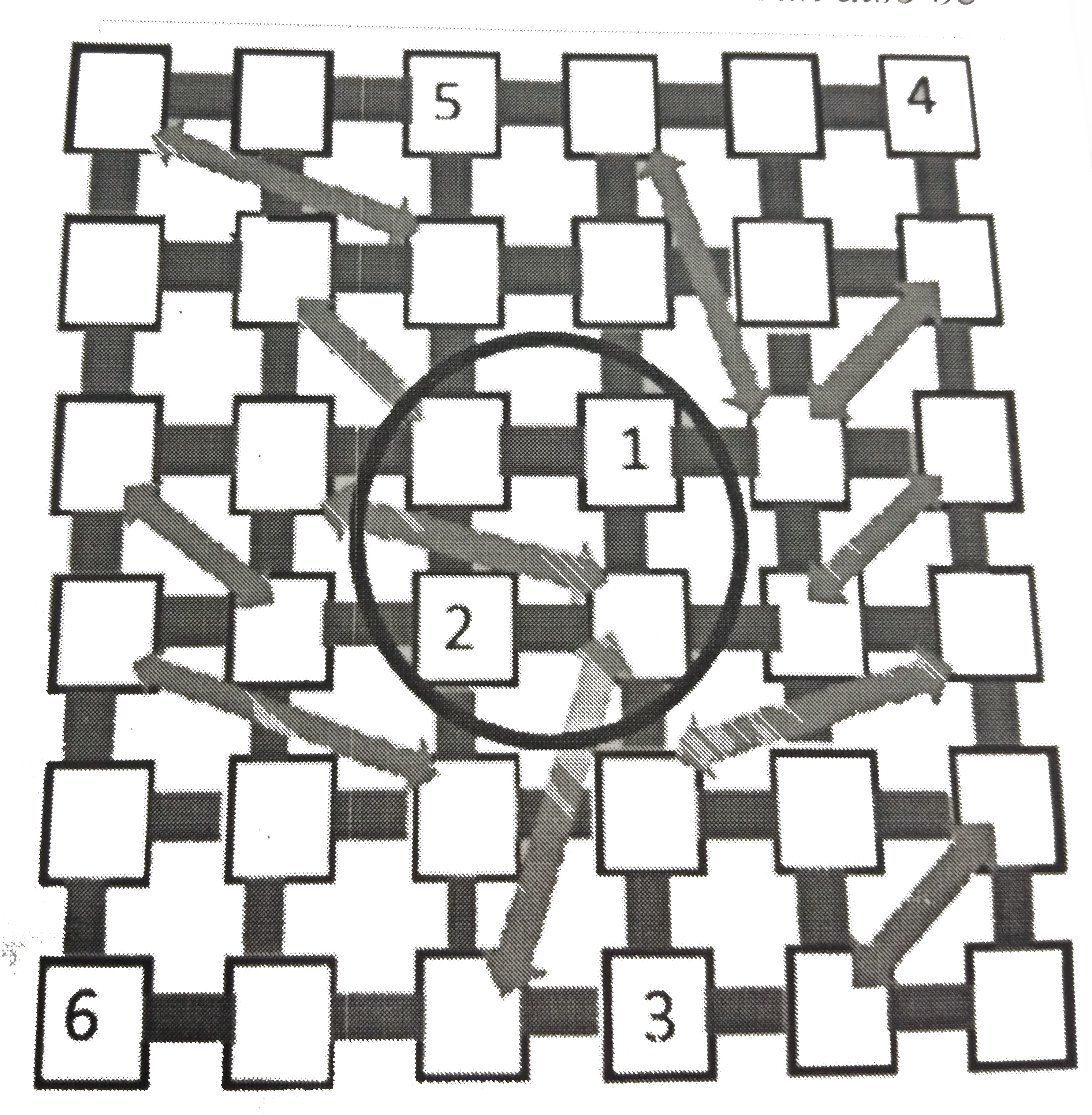
View SolutionParagraph 1
At a global financial services firm we worked with, a longtime customer accidentally submitted the same application file to two offices.Though the employees who reviewed the file were supposed to follow the same guidelines-and thus arrive at similar outcomes-the separate offices returned very different quotes. Taken aback, the customer gave the business to a competitor. From the point of view of the firm, employees in the same role should have been interchangeable, but in this case they were . not. Unfortunately, this is a common problem.
Paragraph 2
Professionals in many organizations are assigned arbitrarily to cases: appraisers in credit-rating agencies,physicians in emergency rooms, underwriters of loans and insurance, arid others. Organizations ·expect consistency from these professionals: Identical cases should be treated similarly, if not identically. The problem is that humans are unreliable decision makers, their judgments are strongly influenced by irrelevant factors, such as their current mood, the time since thcir last meal, and the weather. We call the chance variability of judgments noise. It is an invisible tax on the bottom line of many companies.
Paragraph 3
Some jobs are noise-free. Clerks at a bank or a post office perform complex tasks, but they must follow strict rules that limit subjective judgment and guarantee, by design, that identical cases will be treated identically. In contrast, medical professionals, loan officers, project managers, judges,and executives all make judgment calls, which are guided by informal experience and general principles rather than by rigid rules: And if they don't reach precisely the same answer that every other person in their role would, that's acceptable, this is what we mean when we say that a decision is "a matter of judgment." A firm whose employees exercise judgment does not expect decisions to be entirely free of noise. But often noise is far above the level that executives would consider tolerable-and they are completely unaware of it.
Paragraph 4
The prevalence of noise has been demonstrated in several studies.Academic researchers have repeatedly confirmed that professionals often contradict their own prior judgments when given the same data on different occasions. For instance, when software developers were asked on two separate days to estimate the completion time for a given ·task, the hours they projected differed by 71 %, on average. When pathologists made two assessments of the severity of biopsy results, the correlation between their ratings was only .61 (out of a perfect 1.0), indicating that they made inc9nsistent diagnoses quite frequently. Judgments made by different people are even more likely to diverge. Research has confirmed that in many tasks, experts' decisions are highly variable: valuing stocks, appraising real estate, sentencing criminals, evaluating job performance, auditing financial statements, and more. The unavoidable conclusion is that professionals often make decisions that deviate significantly from those of their peers, from their own prior decisions, and from rules that they themselves claim to follow.
Paragraph 5
Noise is often insidious: It causes even successful companies to lose substantial amounts of money without realizing it.How substantial? To get an estimate, we asked executives in one of the organizations we studied the following: "Suppose the optimal assessment of a case is $100,000. What would be the cost to the organization if the professional in charge of the case assessed a value of $115,000? What would be the cost of assessing it at $85,000?" The cost estimates were high. Aggregated over the assessments made every year, the cost of noise was measured in billions- an unacceptable number even for a large global firm. The value of reducing noise even by a few percentage points would be in the tens of millions. Remarkably, the organization had cornpletely ignored the question of consistency until then:
What is/are the author's viewpoint(s) in accordance with Paragraph 5?
(I) The author is skeptical about the credibility of the research works on the measurement of cost of noise.
(II) The author is critical about the consequences of the problem of noise as it leads organizations to· lose substantial amounts of money that often go unrealized.
(III) The author feels that the problem of noise is severe enough to require action.
View SolutionParagraph 1
At a global financial services firm we worked with, a longtime customer accidentally submitted the same application file to two offices.Though the employees who reviewed the file were supposed to follow the same guidelines-and thus arrive at similar outcomes-the separate offices returned very different quotes. Taken aback, the customer gave the business to a competitor. From the point of view of the firm, employees in the same role should have been interchangeable, but in this case they were . not. Unfortunately, this is a common problem.
Paragraph 2
Professionals in many organizations are assigned arbitrarily to cases: appraisers in credit-rating agencies,physicians in emergency rooms, underwriters of loans and insurance, arid others. Organizations ·expect consistency from these professionals: Identical cases should be treated similarly, if not identically. The problem is that humans are unreliable decision makers, their judgments are strongly influenced by irrelevant factors, such as their current mood, the time since thcir last meal, and the weather. We call the chance variability of judgments noise. It is an invisible tax on the bottom line of many companies.
Paragraph 3
Some jobs are noise-free. Clerks at a bank or a post office perform complex tasks, but they must follow strict rules that limit subjective judgment and guarantee, by design, that identical cases will be treated identically. In contrast, medical professionals, loan officers, project managers, judges,and executives all make judgment calls, which are guided by informal experience and general principles rather than by rigid rules: And if they don't reach precisely the same answer that every other person in their role would, that's acceptable, this is what we mean when we say that a decision is "a matter of judgment." A firm whose employees exercise judgment does not expect decisions to be entirely free of noise. But often noise is far above the level that executives would consider tolerable-and they are completely unaware of it.
Paragraph 4
The prevalence of noise has been demonstrated in several studies.Academic researchers have repeatedly confirmed that professionals often contradict their own prior judgments when given the same data on different occasions. For instance, when software developers were asked on two separate days to estimate the completion time for a given ·task, the hours they projected differed by 71 %, on average. When pathologists made two assessments of the severity of biopsy results, the correlation between their ratings was only .61 (out of a perfect 1.0), indicating that they made inc9nsistent diagnoses quite frequently. Judgments made by different people are even more likely to diverge. Research has confirmed that in many tasks, experts' decisions are highly variable: valuing stocks, appraising real estate, sentencing criminals, evaluating job performance, auditing financial statements, and more. The unavoidable conclusion is that professionals often make decisions that deviate significantly from those of their peers, from their own prior decisions, and from rules that they themselves claim to follow.
Paragraph 5
Noise is often insidious: It causes even successful companies to lose substantial amounts of money without realizing it.How substantial? To get an estimate, we asked executives in one of the organizations we studied the following: "Suppose the optimal assessment of a case is $100,000. What would be the cost to the organization if the professional in charge of the case assessed a value of $115,000? What would be the cost of assessing it at $85,000?" The cost estimates were high. Aggregated over the assessments made every year, the cost of noise was measured in billions- an unacceptable number even for a large global firm. The value of reducing noise even by a few percentage points would be in the tens of millions. Remarkably, the organization had cornpletely ignored the question of consistency until then:
What is the opposite of the phrase "Unfortunately, this is a common problem" as mentioned in the Paragraph 1?
View SolutionStudy the given information carefully and answer the following questions.
There was a football tournament of three teams i.e. A, B and C in which each team played 2 matches. Score pattern of the tournament is:
• A team gets 2 points for scoring a goal against the opponent team.
• A team gets 3 points for scoring a goal against the opponent team from the outside area.
• There is a penalty of 1 point if a team concedes a goal.
• Only three players from each team scored the goals.
A – B Match: B is the winner of this game. Total points scored by B in this match is 4 . Also, team A scored 2 goals and none of the players scored the goal from the outside area.
A – C Match: C scored 0 points in the match. Only one player from team A scored a goal from outside area. A scored 4 points in this match.
B – C Match: B gets 6 points from match. Team C scored 1 goal more than Team B. One player from team B scored a goal from outside area but none from team C.
What is the maximum possible sum of the total number of goals scored by those players of all three teams, who score more than one goal in a tournament?
View Solution